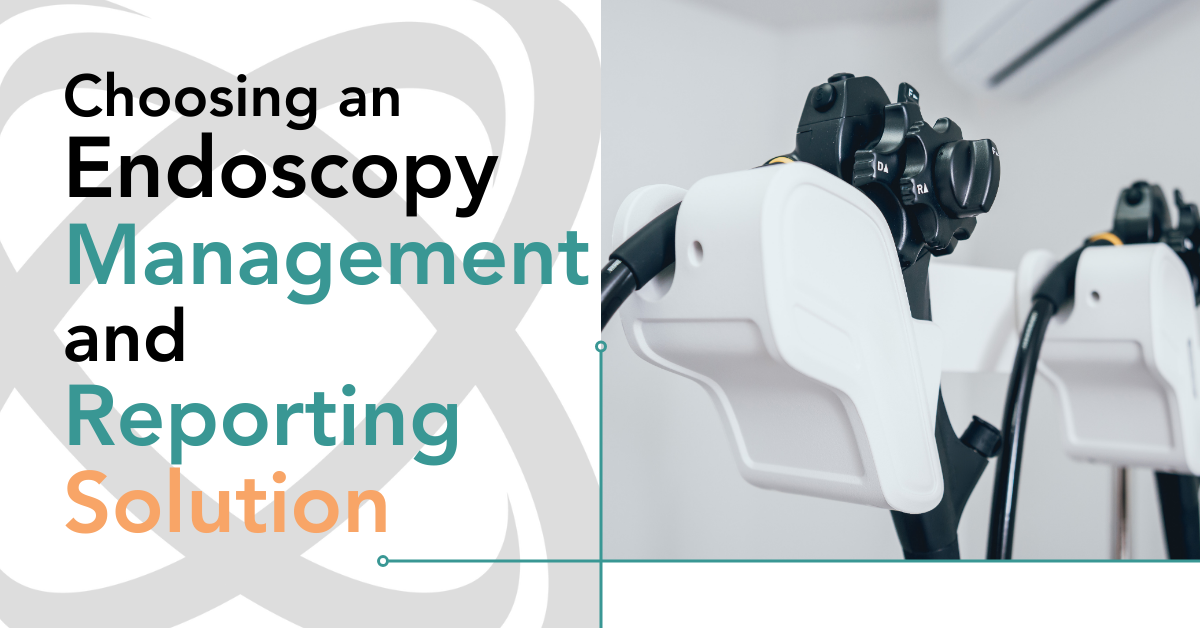Endoscopy imaging and reporting software play a crucial role in modern medical practices. These advanced tools provide essential capabilities for high-quality imaging, streamlined workflows, and accurate report generation in endoscopy suites. These solutions significantly improve the documentation process by efficiently capturing, storing, and managing endoscopic images and videos, ultimately enhancing patient care.
When choosing an endoscopy management and reporting system, healthcare providers should consider several key features to ensure they select the most appropriate solution for their needs. These systems often integrate with hospital networks and electronic health records, enabling seamless information sharing among medical professionals.
Key Features for Endoscopy Imaging Software
When assessing endoscopy imaging software, it’s crucial to look for advanced image quality capabilities. High-resolution image and video capture are essential for superior detailing during examinations, and advanced image processing techniques ensure true-to-life color reproduction and real-time adjustments. Features such as zoom, enhancement, and comparison modes further facilitate a deeper examination, leading to better patient outcomes.
Compatibility and seamless integration are also vital. The software should support multi-vendor interoperability for connectivity with a wide range of endoscopy cameras and ancillary equipment. Robust and secure data exchange protocols enable smooth integration with EMR/EHR systems, PACS, and other healthcare IT infrastructure. Additionally, the software should integrate smoothly with existing workflows to minimize disruption and enhance user adoption.
An intuitive user interface with workflow enhancement tools is another critical feature. A user-friendly interface minimizes the learning curve for clinical staff, allowing them to focus on patient care. Streamlined processes, like one-click exam start and quick access controls, significantly reduce procedure turnaround times. Customization options also allow the interface to be tailored to the specific needs of the endoscopy team, optimizing the workflow further.
Efficient data management and archival capabilities ensure seamless organization and retrieval for patient care management. Intelligent data categorization and search functionality enable instant access to patient records, images, and videos. Automated backup systems and secure cloud storage solutions safeguard data against loss and ensure long-term archival.
Must-Have Capabilities in Endoscopy Reporting Solutions
When choosing an endoscopy reporting solution, look for extensive customization and intelligent template design. Software with highly customizable templates can match each physician’s preferred reporting style, and intelligent template features—such as conditional logic—can ensure that relevant details aren’t overlooked. The integration of multimedia elements like images and videos directly within the report can also create a more comprehensive record of the procedure.
Sophisticated documentation and data aggregation capabilities centralize and streamline the recording of critical information. Automated capture of detailed procedural data and patient information minimizes manual input errors, while the inclusion of comprehensive data inputs consolidates all relevant information into one accessible report. Quick access to historical data during report creation can inform current patient analysis and follow-up recommendations.
Security and regulatory compliance are paramount. Ensuring that the chosen software has a strong encryption framework to secure sensitive patient data in storage and during transmission is crucial. The software should also comply with evolving healthcare regulatory requirements such as HIPAA and GDPR.
Integrated analytics and performance metrics capture valuable insights for continuous quality improvement. Reporting capabilities that assist with performance reviews help monitor the efficiency of reporting and identify any areas in need of improvement. Comprehensive coding and billing integration streamline the financial aspect of reporting, automating the coding process, and enhancing billing accuracy and efficiency.
Evaluating Software Systems
As part of the selection process, it’s important to consider the software’s scalability. A modular design allows for the addition of features or integrations as the needs of the practice expand. The system should have a robust infrastructure capable of managing increased data loads from larger patient volumes or additional endoscopy suites.
Comprehensive training and support facilitate smooth transitions and ongoing usage. Access to training materials, including online tutorials, in-person workshops, and user manuals, caters to different learning preferences. Proactive and responsive customer support through various channels is essential for quick resolution of any unexpected challenges.
Cost-effectiveness is another critical factor. A transparent pricing model should outline purchase costs and any recurring fees. Long-term financial analysis should consider potential savings in time, increased patient throughput, and error reduction.
Enhanced data analysis and reporting capabilities help make informed decisions based on insightful data. The system should offer embedded analytics tools that provide actionable insights into clinical operations and patient outcomes, along with customizable reporting features for generating facility-specific operational and compliance reports.
Future-Proof Technology
Longevity and adaptability are key considerations when investing in endoscopy software. The chosen system should be built on modern technology standards to accommodate future advancements in both endoscopy techniques and healthcare IT infrastructure. Look for vendors that offer regular updates and have a track record of responding to industry changes. It’s also wise to review service agreements carefully, ensuring they include provisions for ongoing compatibility with new medical protocols and equipment. This foresight can help protect your investment and avoid premature obsolescence in a rapidly evolving medical landscape.
How Can NewCura Help?
For those exploring the latest in endoscopy imaging and reporting technology, NewCura offers specialized solutions like EndoManager® and ScopeCycle®. Designed to align with intricate clinical workflows, these tools can transform operational efficiency and diagnostic precision within your practice.
NewCura’s solutions boast vendor-neutral integration, ensuring compatibility with various endoscopy camera systems and medical record databases. High-definition image and video capture ensures the detail and clarity needed for accurate diagnoses. Efficient workflow features, including an easy-to-use interface and one-click functionality, help streamline operations. Customizable reporting with the EndoManager® Report Writer supports tailored documentation and automatic EMR interfacing.
Moreover, NewCura solutions are scalable, making them suitable for a single endoscopy suite or an entire enterprise. Robust support and training resources ensure effective implementation and ongoing usage. By choosing NewCura’s solutions, healthcare facilities can achieve enhanced patient care, operational efficiency, and compliance, providing a solid return on investment and a foundation for future technological advancements.



